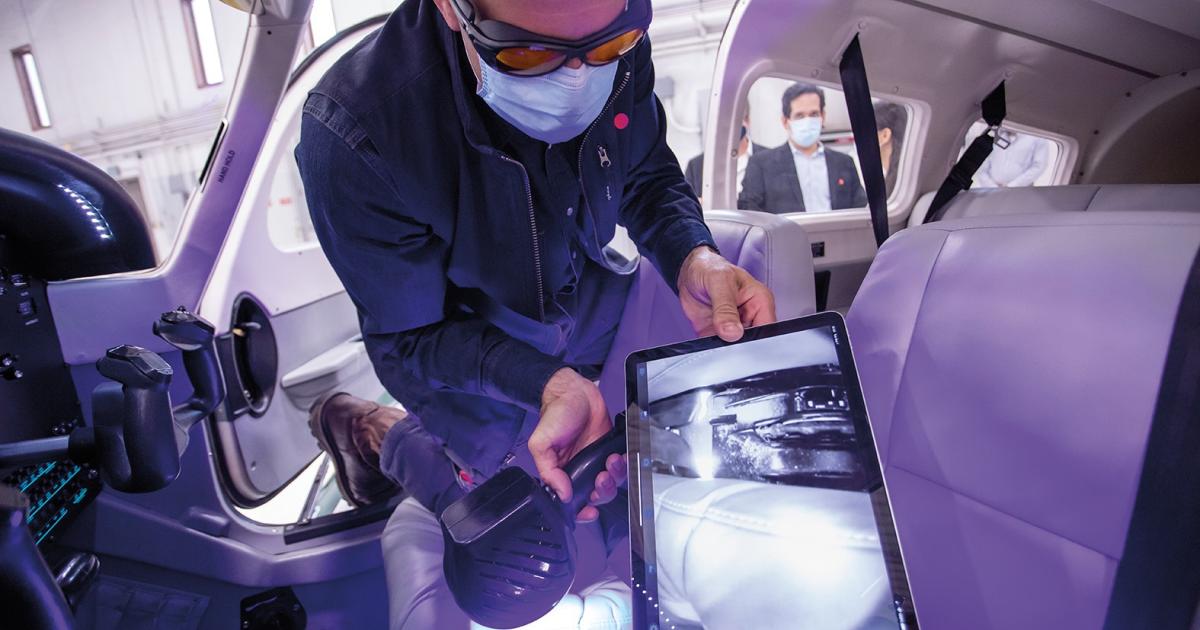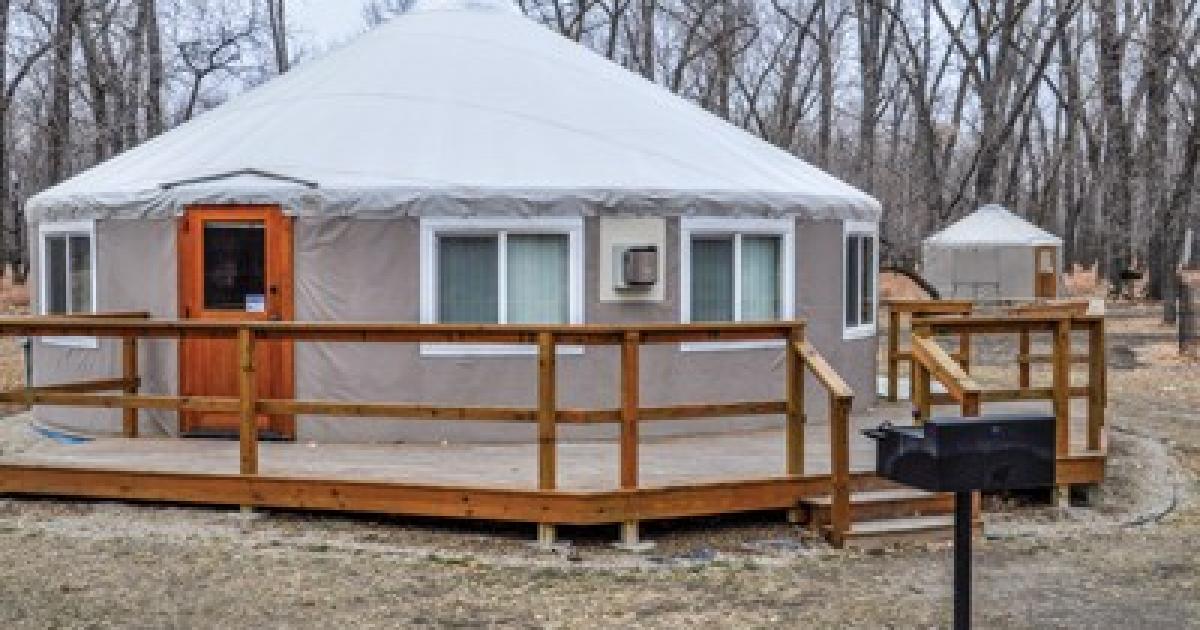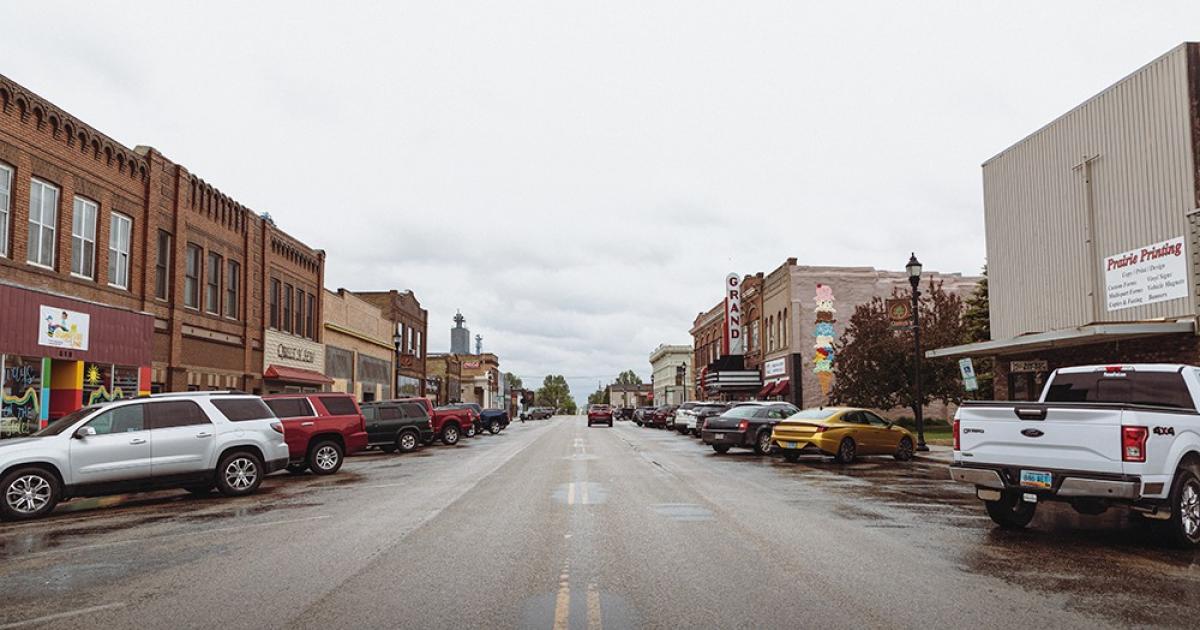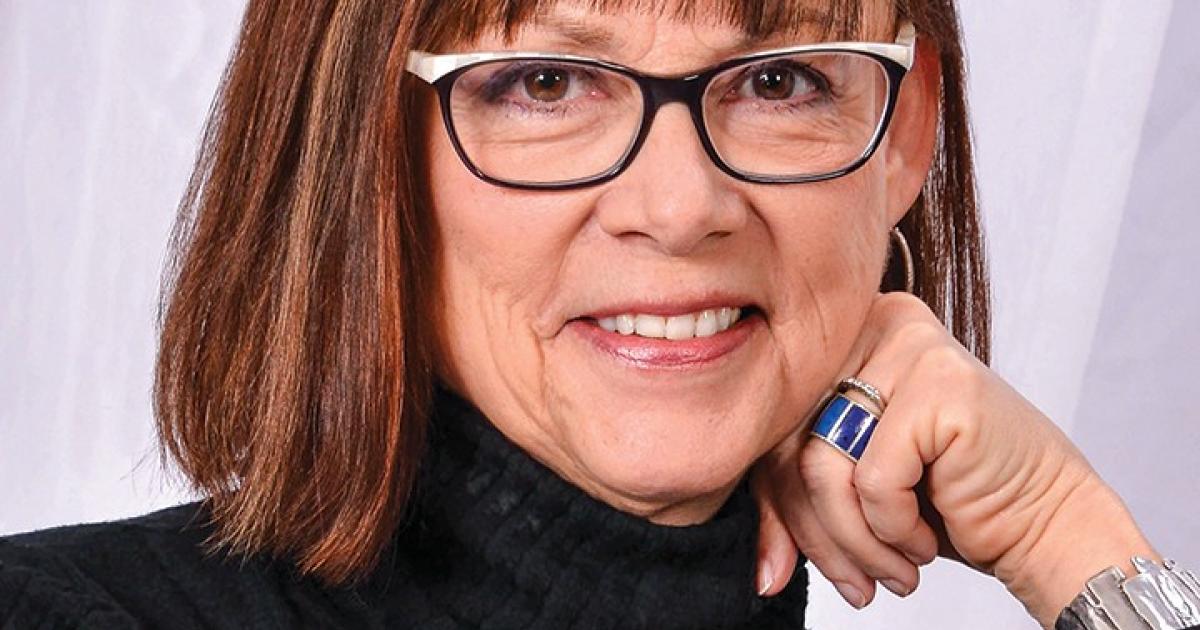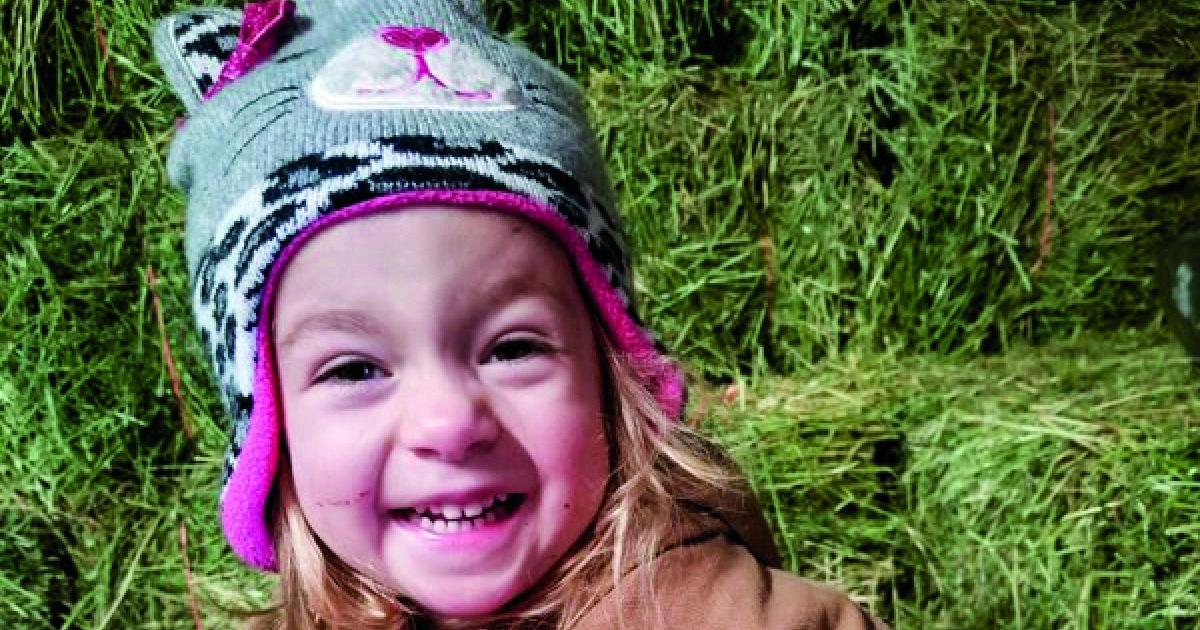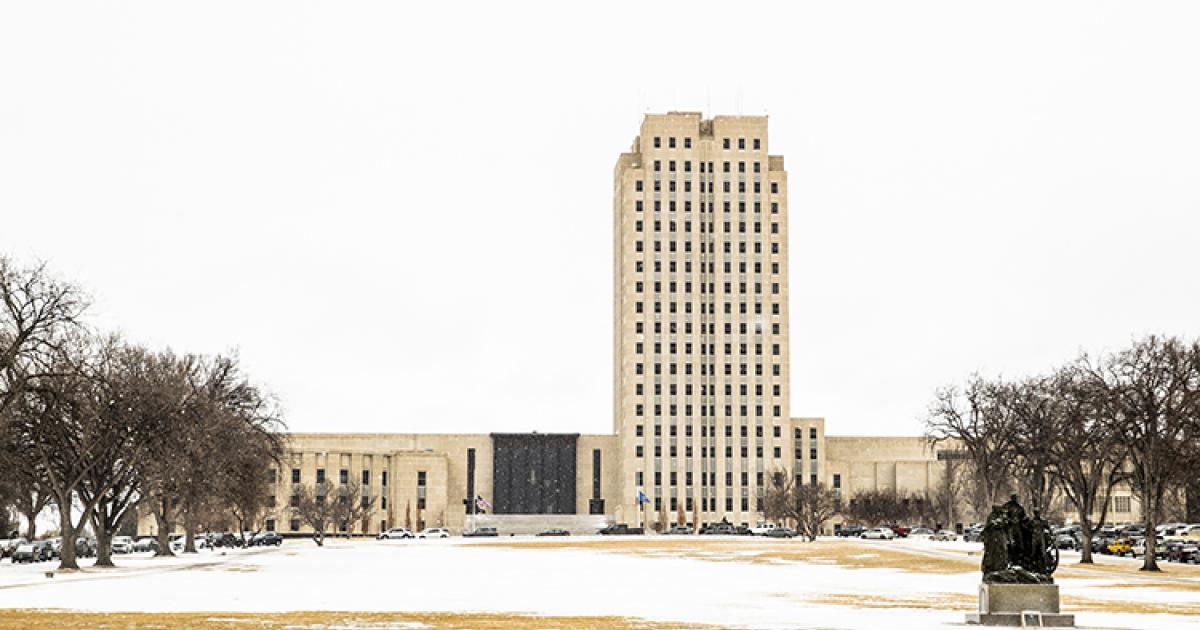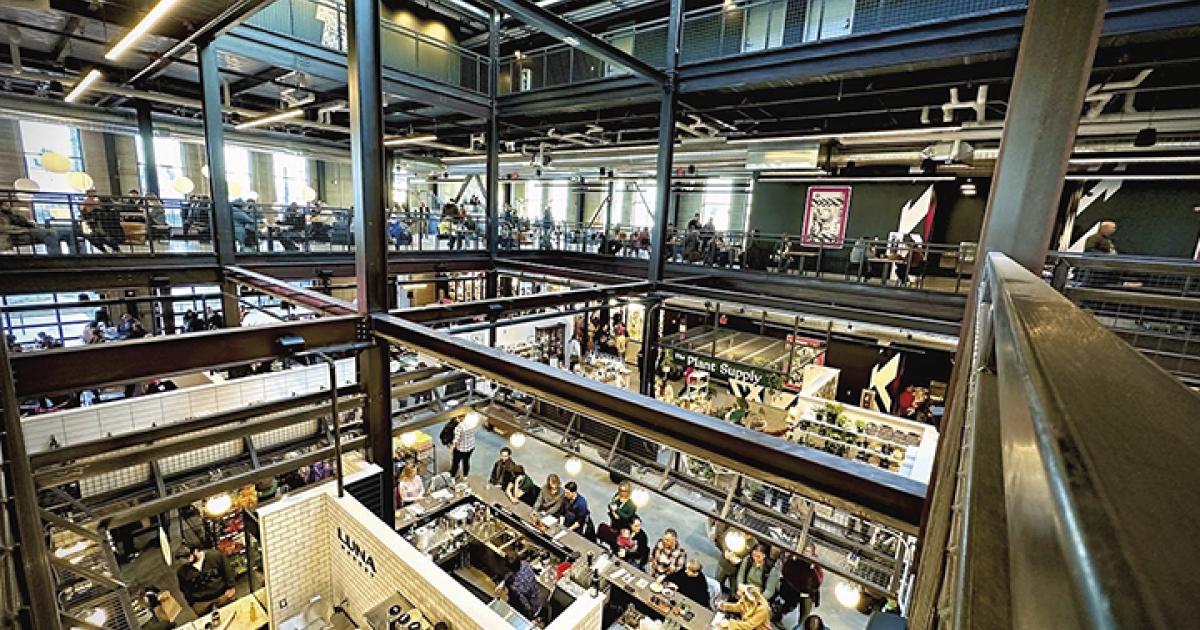A pioneering patented technology will detect, disinfect and document contaminants, including human respiratory droplets.
This revolutionary patented technology was developed by the U.S. Army with the U.S. Department of Agriculture (USDA) and is being modified and enhanced by SafetySpect for commercial applications, researched and scientifically tested by the University of North Dakota (UND) and developed to be FDA-compliant.
This new sanitation process, conducted by a contamination and sanitation inspection and disinfection (CSI-D) tool, provides peace of mind that the highest hygiene and sanitation standards are met for corporations, governmental and state organizations.
Kneeling in the cockpit of a UND aircraft, Joe Vacek, associate professor of aviation at UND, shines SafetySpect’s handheld contamination detection and disinfection light while checking the results on a tablet. Photos by Mike Hess/UND Today
Technology that UND has tested and continues to develop will create the new global industry standard in sanitation, health and hygiene. The U.S. Air Force, airlines, schools and the global foodservice industry are a few of the industrial behemoths interested in this technology.
Supported by a $1.5 million grant from the N.D. Department of Agriculture, SafetySpect – a California-based company – has brought its virus-fighting solution to multiple UND labs for experimentation. And – upon setting up shop in the UND Center for Innovation – the company is aiming to establish a Midwest footprint.
SafetySpect’s goal is to unveil the technology in the first quarter of 2021 and have dozens of prototype UV light scanner/disinfection systems, manufactured in North Dakota, ready to use in the field.
Last fall, leaders of SafetySpect met with Joe Vacek, associate professor of aviation, at UND Flight Operations for a brief demonstration, and over the course of the fall semester, the SafetySpect system was tested in UND labs. Researchers “contaminated” various materials and then assessed the light’s safety and optimized its effectiveness at decontaminating them.
QUICKLY AND SAFELY
Sitting in the cockpit, SafetySpect President and CEO Kenneth Barton aimed a handheld spotlight emitting a deep glow, reminiscent of a black light. Nearby, a tablet showed a live feed of the spotlight’s target: the control panel of a UND Piper Archer aircraft.
“We’re using the CSI-D tool to identify respiratory droplets on sensitive airplane equipment that you cannot traditionally just spray down with disinfectant,” Barton explained.
Continuing to aim the device, Barton swept across high-touch areas, such as the yoke of the craft. On the tablet display, SafetySpect’s optical-imaging technology highlighted saliva enzymes as bright white spots.
The ultraviolet-C (UVC) LEDs that “brightened” the enzymes can also render virus-carrying droplets inert with a strong, brief exposure. The entire process is recorded and captured on the tablet.
“After that, a sanitation crew can get rid of the respiratory droplets in a safe manner, because any virus would have been effectively neutralized by the UVC,” Barton said.
Following another scan, the bright white spots were gone. “And there has been no cross-contamination by any viral issues,” Barton concluded.
NEW APPROACH
The CSI-D tool was conceived by the U.S. Army to reduce sanitation and health risks in its practices, and further development by USDA and scientists from SafetySpect proved it had greater value.
Originally designed for the food industry and use in restaurants and other institutional kitchens, early models of SafetySpect’s CSI-D tool targeted various biologics that can trigger food poisoning and other ailments. The federal government recognizes the value of that work, and since 2019, the company has been working with USDA to improve the CSI-D tool for commercialization.
“Then when COVID hit, we realized there is an enzyme in human respiratory droplets and saliva,” Barton said. “So, we adapted the device to scan for that.”
As demonstrated in the Piper Archer cockpit, the device uses UVC light to identify a contaminant, then an operator can crank up the UVC to essentially kill the virus. This use of UVC isn’t novel, but SafetySpect’s pairing of a tablet device to tune its visual output, as well as record the sanitation process, can create better record-keeping and more accountability in matters of public health.
“All of the process will be recorded, time-stamped, dated and location-stamped in a digital record in the cloud,” said Fartash Vasefi, chief technology officer at SafetySpect. “Other UV systems offer only the disinfection. They don’t have the imaging and documentation to go with it.”
DEVELOPED ON CAMPUS
Vasefi described where UND fits into the picture with SafetySpect’s product development.
“The safety is key,” Vasefi said. “Our partnership and teams have made major strides and are developing groundbreaking work in immediate identification and disinfection against COVID-19 risk.”
In the lab at the UND College of Engineering & Mines run by Kouhyar Tavakolian, associate professor, director of the biomedical engineering program and principal investigator on the SafetySpect project, researchers shine the SafetySpect device on a number of surfaces. Among the surfaces are samples of the plastics, metals, digital screens and upholstery typically found in airplane cockpits.
While an operator conducts the scan, sensors are placed on the operator’s body to detect the intensity of back-reflected UVC light. Tavakolian’s team will study the results to gauge how much personal protective equipment will be needed for safe operation.
“All of this development has to be tied into experiments and validation, and that’s what’s happening at UND,” Vasefi said. “These results will expedite commercialization of the CSI-D system.”
The airline industry, ravaged as it has been by the coronavirus pandemic, has become increasingly interested in SafetySpect’s technology, according to the project leads. What better place to test the technology on aircraft than one of the nation’s top-flight schools?
Tavakolian wants to create a space where he and his team can show the repeatability of the device’s saliva-detection abilities. He is also working with virologist Nadeem Khan at the UND School of Medicine & Health Sciences to understand how intense the UVC light needs to be, and how long it is needed for appropriate exposure, to disable viruses. COVID-19 cannot be used in testing on campus, but other pathogens can be tested at the medical school.
“We think that, in the future, this could be useful for any pathogen that can be transmitted through respiratory droplets,” Tavakolian said. “Remember, even if a vaccine comes, the coronavirus is not going to vanish overnight. Once we have a unit such as the CSI-D tool, we can always improve its accuracy and its size, and we also can always improve on the safety of it.”
NEW PRESENCE
With an established presence at UND, SafetySpect is also working with manufacturer ComDel Innovation in Wahpeton to produce the shells for the UVC spotlights/camera prototypes and assemble the finished products.
Barton said the resources and business climate in North Dakota present an exciting opportunity for a potentially industry-altering technology.
For UND, the collaborative project shows the value of UND’s research and development capabilities, said John Mihelich, interim vice president for research and economic development.
“We’re focused on increasing these types of partnerships in order to move our research and development forward, have an impact and bring new industry partners to the state,” Mihelich said.
Tavakolian is keen on seeing whether the product can help with the COVID-19 situation affecting everyday life around UND and communities across the country.
“You can have it in schools, restaurants, airplanes and the like, so we should be able to get some user response,” Tavakolian said. “Hopefully, that will help the company and the whole idea to go forward quickly.”


